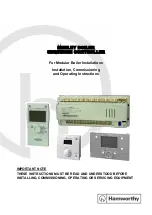
Document Number: 002-10634 Rev. *J
Page
150 of 307
S6J3350 Series
About the Mode Pin (MODE)
Use mode pin MODE by directly connecting it to a VCC or VSS pin. To prevent noise from causing the device to accidentally enter
test mode, reduce the pattern length between each mode pin and a VCC or VSS pin on the printed circuit board, and connect
them with low impedance.
About the Power-on Time
To prevent the internal built-in voltage step-down circuit from malfunctioning, secure a voltage rising time of 50 µs (between 0.2
V and 2.7 V) or longer at the power-on time.
Point to Note during PLL Clock Operation
While a PLL clock is selected, if the oscillator breaks off or input stops, the PLL clock may continue operating with the free running
frequency of the internal self-oscillator circuit. This operation is outside of the guaranteed range.
Power Supply Pin Processing of an A/D Converter
Even when no A/D converter is used, establish a connection such that AVCC5=AVRH5=VCC5 and AVSS/AVRL5=VSS.
Points to Note About Using External Clocks
External clocks are not supported.
External direct clock input cannot be used.
Power-on Sequence of the Power Supply Analog Inputs of an A/D Converter
Be sure to turn on the digital power supply (VCC) before the application of the power supplies (AVCC, AVRH, and AVRL) and
analog inputs (AN0 to AN63) of an A/D converter.
At the power-off time, turn off the power supplies and analog inputs of the A/D converter, and then turn off the digital power supply
(VCC). Perform these power-on and power-off operations without AVRH exceeding AVCC. Even when using a pin shared with an
analog input as an input port, do not allow the input voltage to exceed AVCC. (Turning on or off the analog supply voltage and
digital supply voltage simultaneously is not a problem.)
Method to Switch Off VCC12 during Power-Off Sequence
During power-off sequence, it is necessary to switch off VCC12 by driving PSC1 pin low by entering PSS mode (power domain 2
off). If VCC12 needs to be switched off by other means, RSTX needs to be asserted before switching off VCC12 to inactivate the
operation of VCC12 supplied domain below the operation assurance range.
About C Pin Processing
This device has a built-in voltage step-down circuit. Be sure to connect a capacitor to the C pin for internal stabilization of the
device. For the standard values, see "Recommended operating conditions" in the latest data sheet.
Precautions on Designing a Mounting Substrate
Measures against heat generation from the package must be taken for the mounting substrate to observe the absolute maximum
rating (operating temperature). Design a mounting substrate with 4 or more layers. Connect the back of the package stage and
the substrate pad with solder paste. Arrange thermal via holes on the substrate pad.
Notes on Writing to a Register Containing a Status Flag
In writing to a register containing a status flag (particularly an interrupt request flag, etc.) to control a function, it is important to
take care not to accidentally clear the status flag.
Therefore, before the write operation, configure the status bit such that the flag is not cleared, and then set the control bit to the
desired value.
Especially for control bits configured as a set of multiple bits, bit instructions cannot be used (bit instructions have only 1-bit
access). In such cases, byte, half-word, or word access is used to write to the control bits and a status flag simultaneously.
However, at this time, be careful not to accidentally clear bits other than the intended ones (the status flag bit in this case).
Note: Bit instructions take this point into account for registers that support bit-band units, so it does not need to be a concern. You
need to take care when using bit instructions for registers that do not support bit-band units.
















































